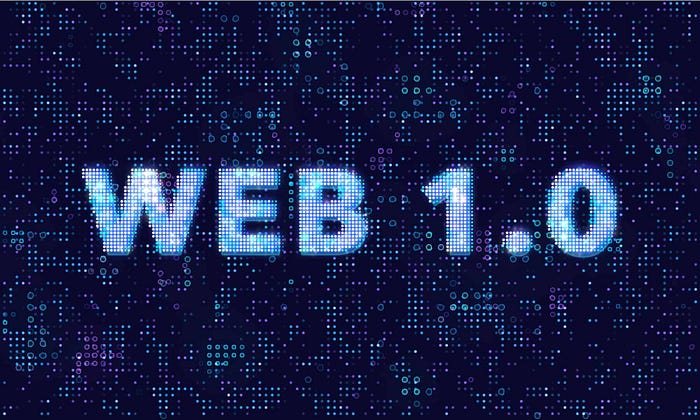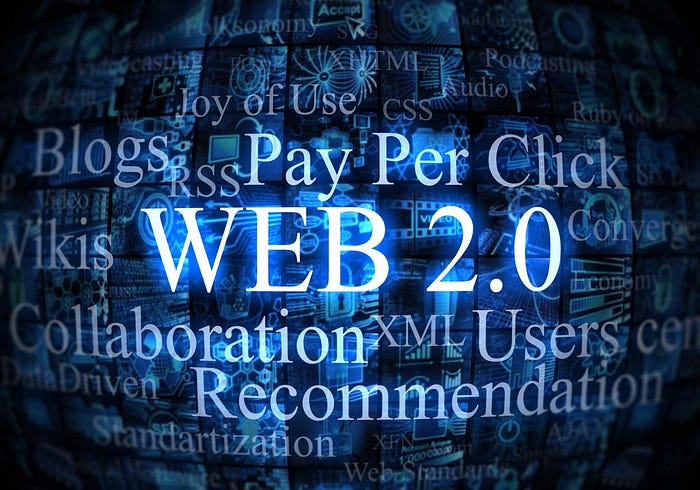The Future of World Wide Web
HOW WAS WEB CREATED?
In the late 1980s, British computer scientist Sir Tim Berners-Lee, working at CERN (European Organization for Nuclear Research), developed the concept of the World Wide Web. His vision was to create a system that allowed researchers to share and access information easily.
Before we go on our way to explore the Future of web, we should know the history of web 1.0 and web 2.0 first.

WHAT EXACTLY IS WEB 1.0?
Imagine the early days of the internet when websites were basic and didn’t have much interactivity. That’s Web 1.0! It started in the late 1980s and gained popularity in the 1990s. During this time, websites were like online brochures. They provided information but didn’t allow users to do much else. People could only read the content and couldn’t actively participate or interact with the websites. It was like a one-way street.

WHAT IS WEB 2.0?
Web 2.0 changed everything! This is exactly what we are using now. It emerged in the early 2000s and made the internet more dynamic and interactive. With Web 2.0, websites became places where users could actively contribute, collaborate, and connect with others. This is when social media, blogs, and video-sharing sites came into the picture. People could create their own content, share it with others, and interact through comments, likes, and shares. It became a two-way street where users had a voice and could engage with the online community.
THE FUTURE OF THE INTERNET, WEB 3.0
Now let’s talk about Web 3.0 that everybody seems to be discussing. This is the next big thing for the internet. Web 3.0 aims to make the web even smarter, connected, and decentralized. It will use advanced technologies to create a more intelligent and personalized web experience. For example, websites will understand the meaning of the content and be able to give you better search results and recommendations. It will also leverage technologies like blockchain to make the web more decentralized, secure, and private.

Web 3.0 will also bring Artificial Intelligence, Virtual Reality, and Internet of things together to create new possible use of the internet. It will make the web more immersive, adaptive, and personalized to your needs. Imagine a web that understands you better and can provide you with customized services and experiences.
Although Web 3.0 is still in its early stages of development, we can already see some projects and initiatives exploring its potential. These include blockchain-based platforms, decentralized file storage systems, and efforts to create an open and decentralized social media ecosystem.
Here are a few things that we should be looking for from Web 3.0:
- Improvements to privacy and security: Web 3.0 plans to address privacy issues by utilizing technologies like blockchain, which offers a decentralized and secure framework. Users may choose to share information selectively and have more control over their data. The personal information of people can be protected and the chance of data breaches and unauthorized access can be decreased.
- Decentralization and User Empowerment: By using technologies like blockchain, Web 3.0 offers users the control of their online experiences and reduces dependence on a single entity. Without relying on a centralized platform, users can communicate directly with one another, enabling peer-to-peer transactions, or content sharing.
- Ownership of Digital Assets: with Web 3.0 users can have true ownership and control over their digital assets, such as cryptocurrencies, NFTs, or even online-property. Through smart contracts, users can establish ownership rights, prove authenticity, and transact securely even without middlemen. This opens up new possibilities for creators, artists, and entrepreneurs to monetise their work directly.
- Smarter Web: Web 3.0 makes the internet smarter by allowing different websites and services to communicate and understand each other better. This leads to more accurate search results, personalized recommendations, and seamless integration of data from different sources. As we can already see now, Microsoft Bing has implemented ChatGPT into their search engine, which is totally a game changer. With Bing’s AI-powered search, you can expect to enjoy a faster and more personalized preference search than you would get from a regular Google or Bing search. You can also expect to get citations or references as well as conversational chat results.

CONCLUSION
Web 3.0 seems promising for the future of the internet even if it is still in its early stage of development. Web 3.0 presents tremendous potential because of its priority on privacy, decentralization, user empowerment, and cutting-edge technologies. Hopefully, we are going to see the improvement of this technology and also its deployment in the near future.
